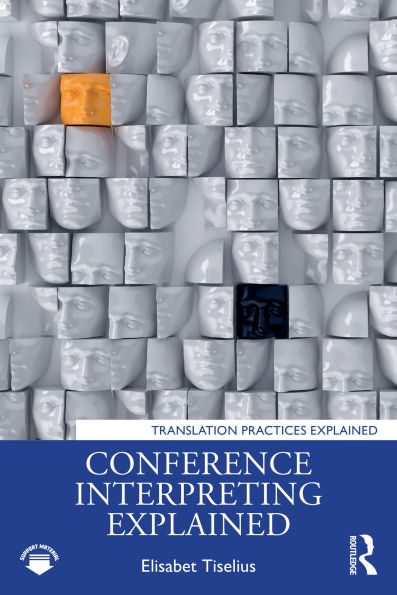Building on the foundations of Roderick Jones’ authoritative and popular text, this brand-new textbook is a comprehensive, up-to-date and easily accessible introduction to conference interpreting. Elisabet Tiselius combines practical approaches and their theoretical underpinnings to guide beginning students. The text links exercises to the theory behind them, from early theories to modern understandings of the demands of conference interpreting.
This guide includes invaluable material on freelancing and professional development. Tiselius integrates remote interpreting and computer-aided interpreting throughout the book. The volume also includes a range of exercises from self-assessment, speech-writing, and note-taking to consecutive and simultaneous. Theoretical concepts are illustrated with anecdotes from Elisabet Tiselius’ personal experience, taking readers behind the scenes of conference interpreter education, and equipping them with the tools to understand how to practise and why different exercises are necessary.
With further reading and related video resources here: https://routledgetranslationstudiesportal.com/, this is the essential guide to understanding the practice and theory of conference interpreting for all courses in interpreting and interpreter training.
Building on the foundations of Roderick Jones’ authoritative and popular text, this brand-new textbook is a comprehensive, up-to-date and easily accessible introduction to conference interpreting. Elisabet Tiselius combines practical approaches and their theoretical underpinnings to guide beginning students. The text links exercises to the theory behind them, from early theories to modern understandings of the demands of conference interpreting.
This guide includes invaluable material on freelancing and professional development. Tiselius integrates remote interpreting and computer-aided interpreting throughout the book. The volume also includes a range of exercises from self-assessment, speech-writing, and note-taking to consecutive and simultaneous. Theoretical concepts are illustrated with anecdotes from Elisabet Tiselius’ personal experience, taking readers behind the scenes of conference interpreter education, and equipping them with the tools to understand how to practise and why different exercises are necessary.
With further reading and related video resources here: https://routledgetranslationstudiesportal.com/, this is the essential guide to understanding the practice and theory of conference interpreting for all courses in interpreting and interpreter training.

Conference Interpreting Explained
228
Conference Interpreting Explained
228Related collections and offers

Product Details
| ISBN-13: | 9781040359952 |
|---|---|
| Publisher: | Taylor & Francis |
| Publication date: | 07/30/2025 |
| Series: | Translation Practices Explained |
| Sold by: | Barnes & Noble |
| Format: | eBook |
| Pages: | 228 |
| File size: | 3 MB |
